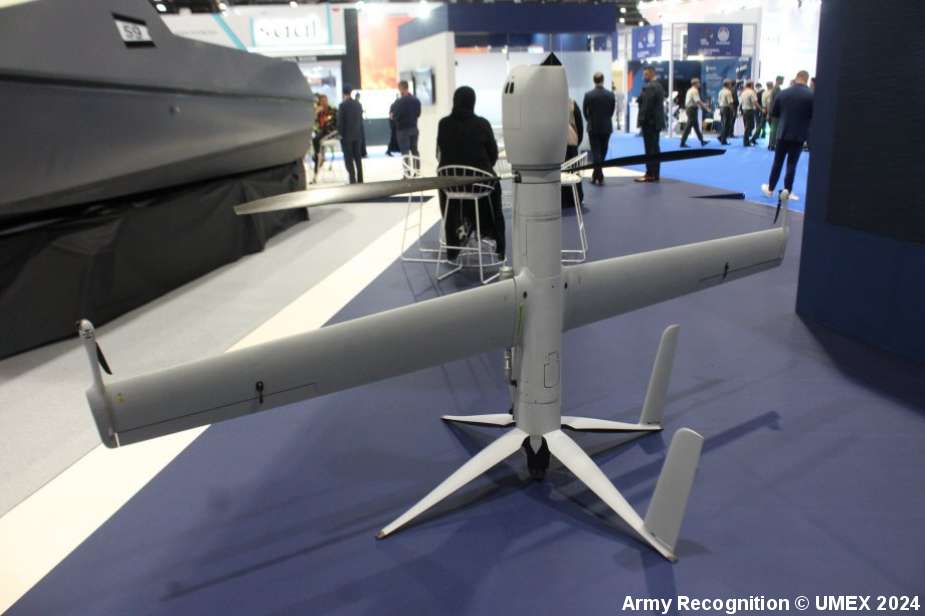Breaking news
UMEX 2024: US company Aerovel showcases Flexrotor UAS after successful US Navy evaluation.
At the UMEX 2024 exhibition in Abu Dhabi, United Arab Emirates, Aerovel, a US-based company recently acquired by Airbus Helicopters, showcases its Flexrotor small tactical unmanned aerial system (STUAS). This system, which has been recently tested by the US Navy in the Persian Gulf, could represent a new development in unmanned aerial technology for a variety of applications.
Follow Air Recognition on Google News at this link
 The Aerovel Flexrotor is intended for use in intelligence, surveillance, target acquisition, and reconnaissance (ISTAR) missions in both military and civilian contexts. (Picture source: Army Recognition)
The Aerovel Flexrotor is intended for use in intelligence, surveillance, target acquisition, and reconnaissance (ISTAR) missions in both military and civilian contexts. (Picture source: Army Recognition)
The Flexrotor is classified as a Group 2 STUAS, equipped with vertical take-off and landing (VTOL) capabilities, designed to meet the US Department of Defense (DOD) specifications. It is intended for use in intelligence, surveillance, target acquisition, and reconnaissance (ISTAR) missions in both military and civilian contexts. Its capabilities include the detection and real-time transmission of imagery related to unusual or threatening activities and explosive devices, applicable not only to armed forces but also to government, security, and law enforcement operations.
Additionally, the Flexrotor is relevant in civilian sectors such as weather reconnaissance, geological survey, environmental monitoring, fishery surveillance, and offshore patrol, offering a blend of small size, significant payload/range, economy, autonomy, and flexibility in basing.
One key feature of the Flexrotor is its imaging turret, which allows for steering and zooming while being equipped with either daylight or infrared cameras. This feature enables the capture and analysis of video imagery in real-time, which can be shared across various platforms. The system's design facilitates the operation of multiple units from a single control station, enhancing its surveillance capabilities.
The Flexrotor's technical performance includes over 30 hours of flight endurance, a 120-kilometer communication range, and requires a small area (approximately 6m x 6m) for takeoff and landing due to its folding legs. The UAS operates autonomously after takeoff, reducing the need for pilot intervention. Its specifications detail two puller rotors, a rotor diameter of 2.2 meters, and a maximum payload capacity of 7.7 kg, among other features.
Designed to be payload agnostic, the Flexrotor can accommodate various sensors and equipment, including advanced electro-optical and medium-wave infrared turrets, wide-area search capabilities, and communication relays. This ensures that the system can be adapted to specific mission requirements, such as advanced telescopic imaging for day and night, laser illumination and designation, and maritime wide-area search and identification.
In maritime surveillance operations conducted by the US Naval Forces Central Command’s Task Force 59 in the Strait of Hormuz, the Flexrotor demonstrated its capability for extended flight duration and payload carrying in challenging wind conditions. Remarkably, it can be assembled for flight in 10 minutes by just two operators, with an additional 15 minutes required to set up the base equipment.


























